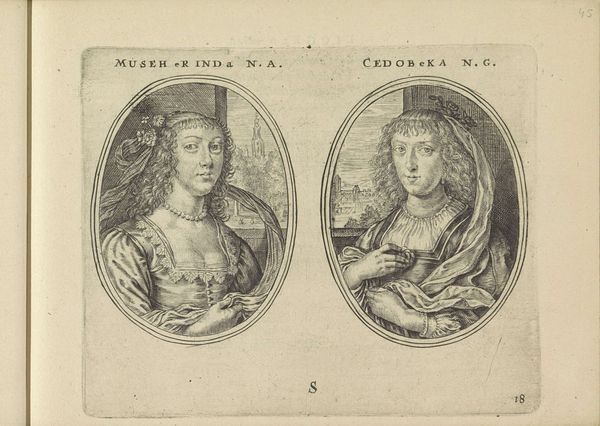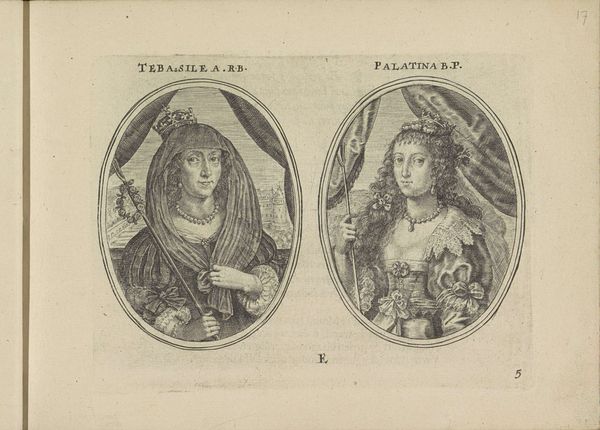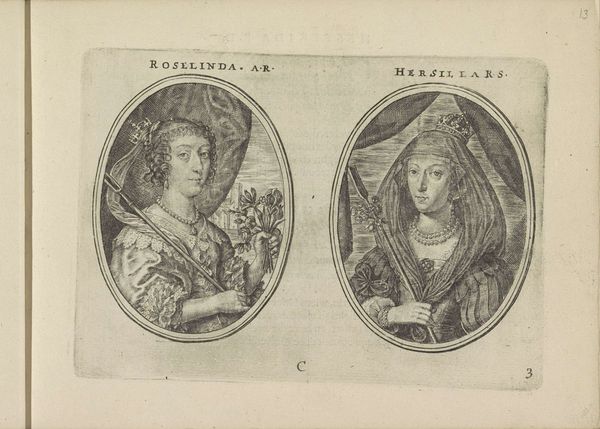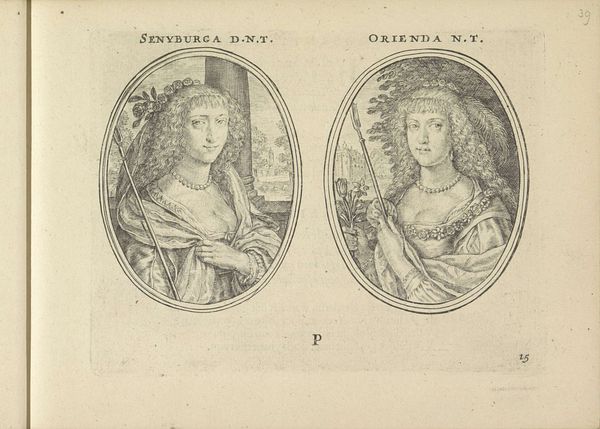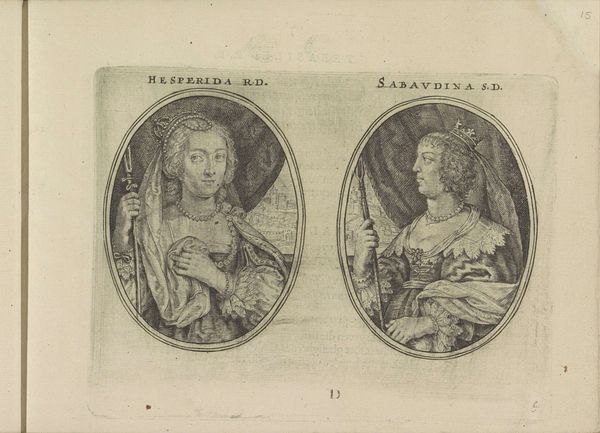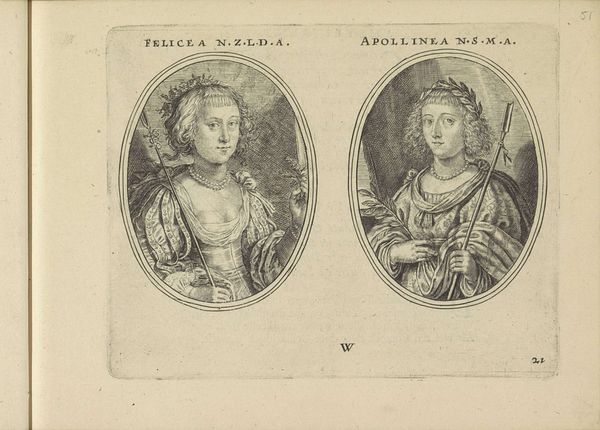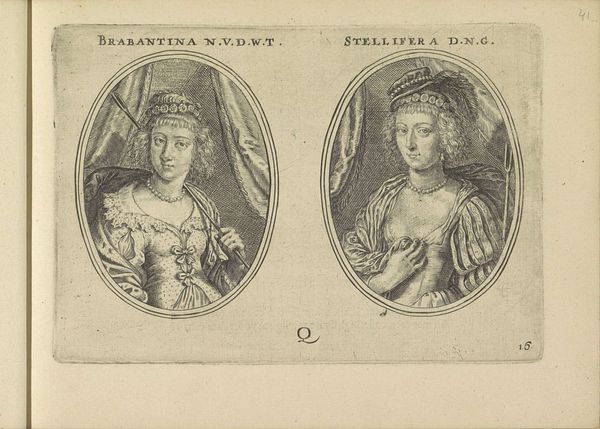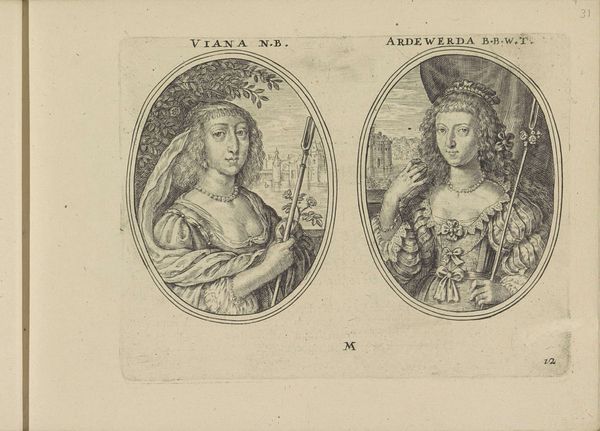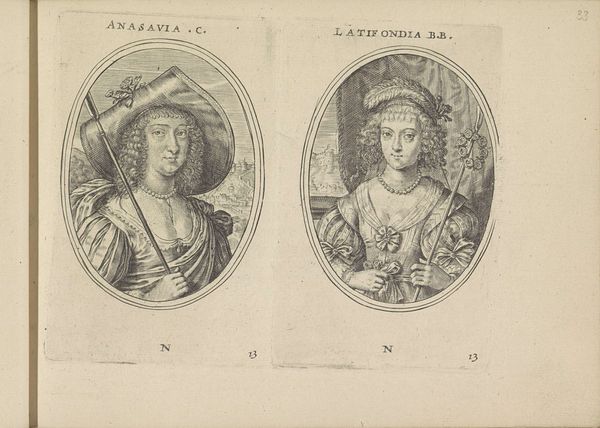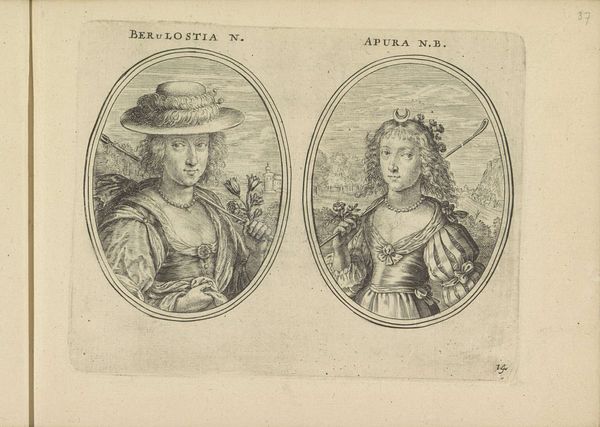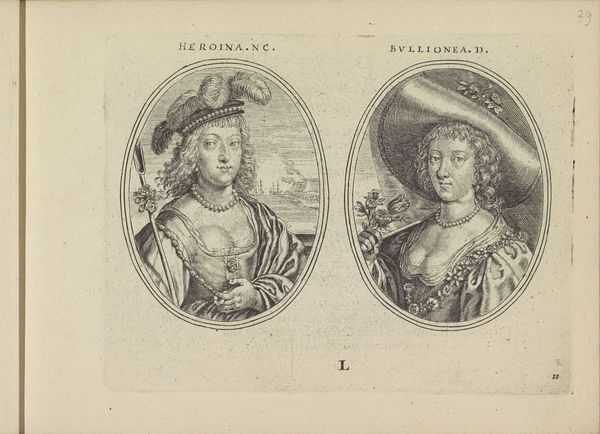
Portretten van Maria de' Medici en Elisabeth van Spanje, beiden als herderin 1640
0:00
0:00
crispijnvandeiipasse
Rijksmuseum
print, engraving
#
portrait
#
baroque
# print
#
engraving
Dimensions: height 110 mm, width 148 mm
Copyright: Rijks Museum: Open Domain
Curator: This engraving by Crispijn van de Passe the Younger, made around 1640, presents us with dual portraits titled "Portretten van Maria de' Medici en Elisabeth van Spanje, beiden als herderin," currently held here at the Rijksmuseum. Editor: They look quite formal for shepherdesses. My immediate reaction is that the materials of the clothes appear very rich and intricately patterned. It is so very crisp. I wonder about the kind of tools the artist might have used to obtain these patterns in print. Curator: It's fascinating how these royal women are represented within the pastoral mode, seemingly removed from the spheres of politics, while the prints circulate these images throughout the social hierarchy. To understand the artwork fully, we have to consider both the symbolism employed, for example, a globe to signal authority over a given sphere of the Earth, and how women rulers had to carefully manage the social construction of themselves via the clothing and jewels they wore. Editor: The choice of printmaking as a medium here speaks volumes. It allowed for replication and distribution, turning images of elite status into accessible commodities for consumption by a wider public. What do you make of that from a social power perspective? Curator: That shift represents an early moment in celebrity culture. It allowed for a very different kind of access by a new public. They actively reframe notions of nobility in light of burgeoning print culture. So, while appearing to conform, they actually subvert and adapt the visual rhetoric. Editor: It's also a study in textures, isn't it? Look at how van de Passe distinguishes between the various fabrics, the smooth globe versus the drapery in the background, each contributing to the overall visual richness that's reproducible for the consumer market. Curator: Absolutely, and in representing both queens as pastoral figures, there's also a carefully constructed narrative about feminine virtue, rulers connected to the land, protectors of their people in alignment with contemporary political and social ideals surrounding female leadership, which can hardly be separated from issues of labor and hierarchy at that point. Editor: Exactly, by carefully manipulating lines and values in engraving to create distinct qualities to the artwork, which elevates these royal women and offers a template to be reproduced en masse and sold off. Curator: Considering all these angles enriches our appreciation for the complex dialogue between art, identity, and politics within baroque Europe. Editor: Indeed. A work of reproducible media that captures not only its subjects but the start of visual economy around status.
Comments
No comments
Be the first to comment and join the conversation on the ultimate creative platform.
